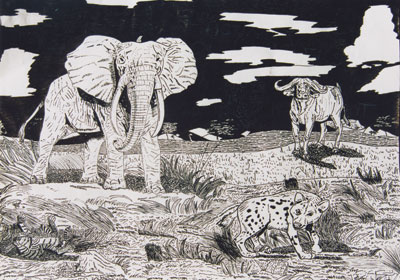All Nonfiction
- Bullying
- Books
- Academic
- Author Interviews
- Celebrity interviews
- College Articles
- College Essays
- Educator of the Year
- Heroes
- Interviews
- Memoir
- Personal Experience
- Sports
- Travel & Culture
All Opinions
- Bullying
- Current Events / Politics
- Discrimination
- Drugs / Alcohol / Smoking
- Entertainment / Celebrities
- Environment
- Love / Relationships
- Movies / Music / TV
- Pop Culture / Trends
- School / College
- Social Issues / Civics
- Spirituality / Religion
- Sports / Hobbies
All Hot Topics
- Bullying
- Community Service
- Environment
- Health
- Letters to the Editor
- Pride & Prejudice
- What Matters
- Back
Summer Guide
- Program Links
- Program Reviews
- Back
College Guide
- College Links
- College Reviews
- College Essays
- College Articles
- Back
A Girl Walks Home Alone at Night MAG
Foreign movies get a bad rap. We make excuses to avoid watching them: “I don’t understand the culture so I can’t relate” or “The meaning of the movie is lost in translation” or the classic “I don’t want to read subtitles.”
But every once in awhile there is a movie that needs to be watched, one that transcends cultural, national, and lingual barriers (in this case, Farsi). “A Girl Walks Home Alone at Night” is transcendent in these aspects, not only because it is creatively inspired by classic Iranian cinema and 1950s Americana, but because it offers commentary on the socio-cultural position of women in Iranian society. The criticism of this lopsided power dynamic is poignant because it is allowed to flourish without the censor of the government.
To any outsider, “A Girl Walks Home Alone At Night,” seems to be, in the writer and
director’s (Ana Lily Amirpour) own words,
an “American inspired, Iranian, vampire Western.” In reality, the movie is so much more. Don’t get me wrong, the interplay and intersections between these genres are blended so well in this neo-noir masterpiece that they seem to take on another life, rather than adhering to their genre archetypes. But the implications of this movie are far more reaching. This movie is, on the surface, about a vampire, a boy, a pimp, a junkie, and a prostitute. The connection between the characters becomes more pronounced as the two storylines, centered on the characters Girl (Sheila Vand) and Arash (Arash Marandi) converge.
Girl is a vampire who prowls the streets of “Bad City” in a conservative religious outfit – a chador – that covers her from head to toe, while stalking possible victims for her prey. By her outward appearance, Girl is considered conservative. However, the symbolism of the vampire evokes a powerful
and conspicuously sexual connotation. Through the use of this archetype, the creator is shedding light on the lack of gender equality in Iran.
In her home, as a contrast to her outward appearance, Girl dances and is virtually indistinguishable from any Western woman. This reflects the abstraction of women in Iranian society as people, who like men, are capable of independent thought and action. (An opposite view is the prevailing mindset in most, but not all, of Iranian society.) Making Girl a vampire was the only way to give a woman any tangible power in Iranian society. The other characters serve only as either Girl’s nourishment and satiation or plot advancement. Arash (Arash Marandi), the only man with a major role who treats women with respect, is allowed to live.
The pair becomes romantically involved. In the story’s hopeful ending, they drive off into the black-and-white sunset together leaving the rundown “Bad City” behind them.
The movie is a directorial and narrative win, and is worth watching based on these pillars alone. But, if you are a true lover of the nuance in film, of applied and concerted brilliance, and of insights so slight yet impactful that they escape boundaries set by culture and skip into pure empathic understanding – repeated viewing is recommended.

Similar Articles
JOIN THE DISCUSSION
This article has 1 comment.

0 articles 0 photos 268 comments